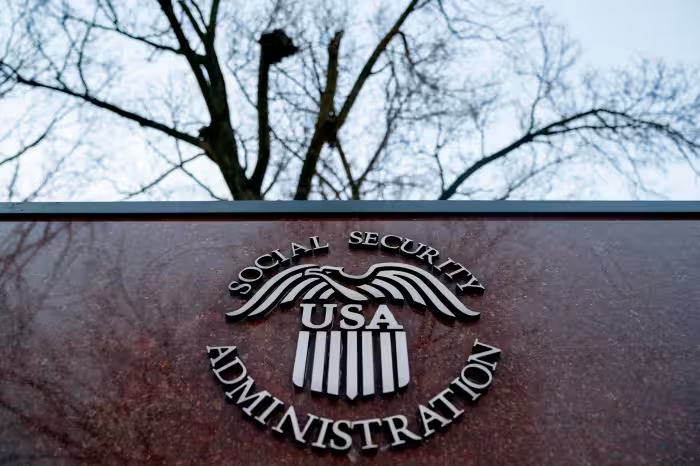Social Security Alerts, News & Updates
Senate Confirms Bisignano to Lead Social Security Administration

Frank Bisignano Takes Charge of Social Security Administration
The Senate has confirmed Frank Bisignano as the new Commissioner of the Social Security Administration, bringing private sector experience to an agency that serves 73 million Americans. The vote split along party lines at 53-47, with Republicans supporting the Fiserv CEO and Democrats expressing concerns about his approach to public benefits.
Bisignano inherits an agency managing $1.5 trillion in annual benefits while facing some genuine operational challenges. If you’ve ever called Social Security and aged noticeably while on hold, you’ll appreciate his promise to fix that particular problem.
His appointment follows a period of leadership transitions at Social Security. Acting Commissioner Leland Dudek stepped in after Michelle King departed, citing concerns about the Department of Government Efficiency’s data access requests. A federal judge recently limited DOGE’s ability to access sensitive beneficiary information, adding another layer to this administrative saga.
From Brooklyn to the Boardroom
Bisignano’s background reads like a classic American success story. Growing up in working-class Brooklyn, he watched his father serve 46 years in Treasury’s customs enforcement. “He was the hardest working person I’ve known,” Bisignano told senators during his confirmation hearing. No arguments there.
His career trajectory took him through JPMorgan Chase and Citigroup before landing at Fiserv, where he oversees operations processing $2.5 trillion daily. That’s trillion with a T. His former boss Sandy Weill called him “the best operations person I’ve ever met,” which in finance circles is like being knighted.
Now he’s trading payment processing for pension payments. The skills might transfer, but the stakeholders are considerably different.
The Political Tug-of-War Over Social Security’s Future
Democrats approached Bisignano’s nomination with notable skepticism. Senators Elizabeth Warren and Ron Wyden organized opposition outside the Senate building, voicing concerns about potential privatization efforts. Their worries stem partly from Bisignano’s February CNBC interview where he described himself as “fundamentally a DOGE person.”
When pressed about privatization during hearings, Bisignano responded definitively: “I’ve never thought about privatizing. It’s not a word that anybody’s ever talked to me about.” Whether this reassured skeptics remains an open question.
Republicans, meanwhile, praised his financial expertise and management experience. They see his private sector background as exactly what Social Security needs to modernize operations and improve service delivery.
Ambitious Goals for America’s Retirement System
Bisignano has outlined several concrete objectives for his tenure. First on the list: fixing those infamous social security phone wait times. Currently, less than half of calls get answered because callers give up. He claims he can reduce wait times to “under a minute.” Social Security employees probably had mixed reactions to that promise.
He’s also targeting the agency’s error rate. While 1% might sound minimal, it translates to significant numbers when you’re dealing with millions of beneficiaries. Between 2015 and 2022, improper payments totaled approximately $71.8 billion. Bisignano called the current error rate “five decimal places too high,” showing he’s serious about precision.
His proposed solutions include implementing artificial intelligence tools to assist call center staff. The goal is efficiency without losing the human element. After all, explaining benefit calculations requires more nuance than a chatbot typically provides.
Immediate Challenges and Ongoing Issues
Beyond operational improvements, Bisignano faces several pressing matters. The agency recently adjusted its overpayment recovery procedures, increasing the default withholding rate to 50% for certain benefits. He’s promised to recover overpaid funds while remaining “humans in the process,” acknowledging the delicate balance between fiscal responsibility and compassion.
The broader context includes Social Security’s long-term solvency challenges. With trust fund projections showing potential shortfalls by 2033, any commissioner faces difficult decisions about ensuring benefits continue for future generations.
What This Means for Beneficiaries
For the 73 million Americans receiving Social Security benefits, Bisignano’s appointment signals potential changes in how they interact with the agency. Shorter wait times would certainly be welcome. More accurate payment processing means fewer surprises in monthly checks.
His private sector background brings both opportunities and concerns. Financial industry efficiency could streamline operations. But Social Security isn’t a business, and beneficiaries aren’t customers in the traditional sense. They’re citizens who’ve paid into a system throughout their working lives.
The coming months will reveal whether Bisignano can balance efficiency improvements with the agency’s public service mission. His success or failure will affect millions of retirees, disabled workers, and survivors who depend on Social Security for financial stability.
Looking Ahead
Bisignano enters office at a critical juncture for Social Security. The agency faces technological modernization needs, workforce challenges, and ongoing political debates about its future structure. His financial sector experience might prove valuable in addressing operational inefficiencies.
Yet managing Social Security requires more than business acumen. It demands understanding the program’s vital role in preventing elderly poverty and providing earned benefits to workers who’ve contributed throughout their careers. Whether a CEO’s mindset can adapt to this public service mandate remains the key question.
One thing seems certain: those legendary wait times better improve. Because if there’s one thing Americans across the political spectrum can agree on, it’s that nobody enjoys listening to hold music for two hours just to ask a simple question about their benefits.
Time will tell if Bisignano can deliver on his promises. But for now, Social Security has new leadership, and 73 million beneficiaries are watching closely.